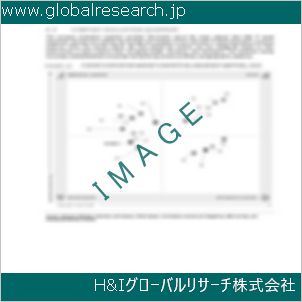Table of Contents
1 Industry Overview of Cellulose(Paperfiber)
1.1 Definition and Specifications of Cellulose(Paperfiber)
1.1.1 Definition of Cellulose(Paperfiber)
1.1.2 Specifications of Cellulose(Paperfiber)
1.2 Classification of Cellulose(Paperfiber)
1.3 Applications of Cellulose(Paperfiber)
1.3.1 Nuclear Application
1.3.2 Non-Nuclear Application
1.4 Industry Chain Structure of Cellulose(Paperfiber)
1.5 Industry Overview and Major Regions Status of Cellulose(Paperfiber)
1.5.1 Industry Overview of Cellulose(Paperfiber)
1.5.2 Global Major Regions Status of Cellulose(Paperfiber)
1.6 Industry Policy Analysis of Cellulose(Paperfiber)
1.7 Industry News Analysis of Cellulose(Paperfiber)
2 Manufacturing Cost Structure Analysis of Cellulose(Paperfiber)
2.1 Raw Material Suppliers and Price Analysis of Cellulose(Paperfiber)
2.2 Equipment Suppliers and Price Analysis of Cellulose(Paperfiber)
2.3 Labor Cost Analysis of Cellulose(Paperfiber)
2.4 Other Costs Analysis of Cellulose(Paperfiber)
2.5 Manufacturing Cost Structure Analysis of Cellulose(Paperfiber)
2.6 Manufacturing Process Analysis of Cellulose(Paperfiber)
3 Technical Data and Manufacturing Plants Analysis of Cellulose(Paperfiber)
3.1 Capacity and Commercial Production Date of Global Cellulose(Paperfiber) Major Manufacturers in 2023
3.2 Manufacturing Plants Distribution of Global Cellulose(Paperfiber) Major Manufacturers in 2023
3.3 R&D Status and Technology Source of Global Cellulose(Paperfiber) Major Manufacturers in 2023
3.4 Raw Materials Sources Analysis of Global Cellulose(Paperfiber) Major Manufacturers in 2023
4 Capacity, Production and Revenue Analysis of Cellulose(Paperfiber) by Regions, Types and Manufacturers
4.1 Global Capacity, Production and Revenue of Cellulose(Paperfiber) by Regions 2019-2024
4.2 Global and Major Regions Capacity, Production, Revenue and Growth Rate of Cellulose(Paperfiber) 2019-2024
4.3 Global Capacity, Production and Revenue of Cellulose(Paperfiber) by Types 2019-2024
4.4 Global Capacity, Production and Revenue of Cellulose(Paperfiber) by Manufacturers 2019-2024
5 Price, Cost, Gross and Gross Margin Analysis of Cellulose(Paperfiber) by Regions, Types and Manufacturers
5.1 Price, Cost, Gross and Gross Margin Analysis of Cellulose(Paperfiber) by Regions 2019-2024
5.2 Price, Cost, Gross and Gross Margin Analysis of Cellulose(Paperfiber) by Types 2019-2024
5.3 Price, Cost, Gross and Gross Margin Analysis of Cellulose(Paperfiber) by Manufacturers 2019-2024
6 Consumption Volume, Consumption Value and Sale Price Analysis of Cellulose(Paperfiber) by Regions, Types and Applications
6.1 Global Consumption Volume and Consumption Value of Cellulose(Paperfiber) by Regions 2019-2024
6.2 Global and Major Regions Consumption Volume, Consumption Value and Growth Rate of Cellulose(Paperfiber) 2019-2024
6.3 Global Consumption Volume and Consumption Value of Cellulose(Paperfiber) by Types 2019-2024
6.4 Global Consumption Volume and Consumption Value of Cellulose(Paperfiber) by Applications 2019-2024
6.5 Sale Price of Cellulose(Paperfiber) by Regions 2019-2024
6.6 Sale Price of Cellulose(Paperfiber) by Types 2019-2024
6.7 Sale Price of Cellulose(Paperfiber) by Applications 2019-2024
6.8 Market Share Analysis of Cellulose(Paperfiber) by Different Sale Price Levels
7 Supply, Import, Export and Consumption Analysis of Cellulose(Paperfiber)
7.1 Supply, Consumption and Gap of Cellulose(Paperfiber) 2019-2024
7.2 Global Capacity, Production, Price, Cost, Revenue, Supply, Import, Export and Consumption of Cellulose(Paperfiber) 2019-2024
7.3 USA Capacity, Production, Price, Cost, Revenue, Supply, Import, Export and Consumption of Cellulose(Paperfiber) 2019-2024
7.4 EU Capacity, Production, Price, Cost, Revenue, Supply, Import, Export and Consumption of Cellulose(Paperfiber) 2019-2024
7.5 China Capacity, Production, Price, Cost, Revenue, Supply, Import, Export and Consumption of Cellulose(Paperfiber) 2019-2024
7.6 Japan Capacity, Production, Price, Cost, Revenue, Supply, Import, Export and Consumption of Cellulose(Paperfiber) 2019-2024
8 Major Manufacturers Analysis of Cellulose(Paperfiber)
8.1 Manufacturer One
8.1.1 Company Profile
8.1.2 Product Picture and Specifications
8.1.2.1 Type I
8.1.2.2 Type II
8.1.2.3 Type III
8.1.3 Capacity, Production, Price, Cost, Gross and Revenue
8.1.4 Contact Information
8.2 Manufacturer Two
8.2.1 Company Profile
8.2.2 Product Picture and Specifications
8.2.2.1 Type I
8.2.2.2 Type II
8.2.2.3 Type III
8.2.3 Capacity, Production, Price, Cost, Gross and Revenue
8.2.4 Contact Information
8.3 Manufacturer Three
8.3.1 Company Profile
8.3.2 Product Picture and Specifications
8.3.2.1 Type I
8.3.2.2 Type II
8.3.2.3 Type III
8.3.3 Capacity, Production, Price, Cost, Gross and Revenue
8.3.4 Contact Information
8.4 Manufacturer Four
8.4.1 Company Profile
8.4.2 Product Picture and Specifications
8.4.2.1 Type I
8.4.2.2 Type II
8.4.2.3 Type III
8.4.3 Capacity, Production, Price, Cost, Gross and Revenue
8.4.4 Contact Information
8.5 Manufacturer Five
8.5.1 Company Profile
8.5.2 Product Picture and Specifications
8.5.2.1 Type I
8.5.2.2 Type II
8.5.2.3 Type III
8.5.3 Capacity, Production, Price, Cost, Gross and Revenue
8.5.4 Contact Information
…
9 Marketing Trader or Distributor Analysis of Cellulose(Paperfiber)
9.1 Marketing Channels Status of Cellulose(Paperfiber)
9.2 Traders or Distributors with Contact Information of Cellulose(Paperfiber) by Regions
9.3 Ex-work Price, Channel Price and End Buyer Price Analysis of Cellulose(Paperfiber)
9.4 Regional Import, Export and Trade Analysis of Cellulose(Paperfiber)
10 Industry Chain Analysis of Cellulose(Paperfiber)
10.1 Upstream Major Raw Materials Suppliers Analysis of Cellulose(Paperfiber)
10.1.1 Major Raw Materials Suppliers with Contact Information Analysis of Cellulose(Paperfiber)
10.1.2 Major Raw Materials Suppliers with Supply Volume Analysis of Cellulose(Paperfiber) by Regions
10.2 Upstream Major Equipment Suppliers Analysis of Cellulose(Paperfiber)
10.2.1 Major Equipment Suppliers with Contact Information Analysis of Cellulose(Paperfiber)
10.2.2 Major Equipment Suppliers with Product Pictures Analysis of Cellulose(Paperfiber) by Regions
10.3 Downstream Major Consumers Analysis of Cellulose(Paperfiber)
10.3.1 Major Consumers with Contact Information Analysis of Cellulose(Paperfiber)
10.3.2 Major Consumers with Consumption Volume Analysis of Cellulose(Paperfiber) by Regions
10.4 Supply Chain Relationship Analysis of Cellulose(Paperfiber)
11 Development Trend of Analysis of Cellulose(Paperfiber)
11.1 Capacity, Production and Revenue Forecast of Cellulose(Paperfiber) by Regions and Types
11.1.1 Global Capacity, Production and Revenue of Cellulose(Paperfiber) by Regions 2024-2029
11.1.2 Global and Major Regions Capacity, Production, Revenue and Growth Rate of Cellulose(Paperfiber) 2024-2029
11.1.3 Global Capacity, Production and Revenue of Cellulose(Paperfiber) by Types 2024-2029
11.2 Consumption Volume and Consumption Value Forecast of Cellulose(Paperfiber) by Regions, Types and Applications
11.2.1 Global Consumption Volume and Consumption Value of Cellulose(Paperfiber) by Regions 2024-2029
11.2.2 Global and Major Regions Consumption Volume, Consumption Value and Growth Rate of Cellulose(Paperfiber) 2024-2029
11.2.3 Global Consumption Volume and Consumption Value of Cellulose(Paperfiber) by Types 2024-2029
11.2.4 Global Consumption Volume and Consumption Value of Cellulose(Paperfiber) by Applications 2024-2029
11.3 Supply, Import, Export and Consumption Forecast of Cellulose(Paperfiber)
11.3.1 Supply, Consumption and Gap of Cellulose(Paperfiber) 2024-2029
11.3.2 Global Capacity, Production, Price, Cost, Revenue, Supply, Import, Export and Consumption of Cellulose(Paperfiber) 2024-2029
11.3.3 USA Capacity, Production, Price, Cost, Revenue, Supply, Import, Export and Consumption of Cellulose(Paperfiber) 2024-2029
11.3.4 EU Capacity, Production, Price, Cost, Revenue, Supply, Import, Export and Consumption of Cellulose(Paperfiber) 2024-2029
11.3.5 China Capacity, Production, Price, Cost, Revenue, Supply, Import, Export and Consumption of Cellulose(Paperfiber) 2024-2029
11.3.6 Japan Capacity, Production, Price, Cost, Revenue, Supply, Import, Export and Consumption of Cellulose(Paperfiber) 2024-2029
12 New Project Investment Feasibility Analysis of Cellulose(Paperfiber)
12.1 New Project SWOT Analysis of Cellulose(Paperfiber)
12.2 New Project Investment Feasibility Analysis of Cellulose(Paperfiber)
13 Conclusion of the Global Cellulose(Paperfiber) (CAS 9004-34-6) Industry 2024 Market Research Report
| ※参考情報 セルロースは、自然界に広く存在する多糖類であり、植物の細胞壁の主要成分として知られています。セルロースは、β-グルコースの直鎖的な重合体であり、しばしば紙の主成分として扱われることから、紙繊維とも呼ばれています。化学的には、セルロースは非常に安定した構造を持ち、そのため様々な物理的および化学的特性を持つことが特徴です。 まず、セルロースの定義についてですが、これは多くの植物に含まれる天然の高分子物質であり、長い直鎖状のグルコース単位が結合してできたポリマーです。このポリマーは、植物の細胞を構成する重要な成分であり、強度や剛性を提供する役割を果たします。特に、木材や綿、麻などの繊維質の植物に多く含まれています。 セルロースの特徴には、まずその強度と耐久性があります。セルロース繊維は、引張強度が高く、破断強度にも優れています。これにより、紙やテキスタイルなどの生成物において非常に重要な材料となっています。また、セルロースは水分を吸収しやすく、湿潤状態でもその物理的特性を保持することができます。しかしながら、セルロース自体は水に溶けることがなく、これがセルロースを用いた製品の加工の際には一つの課題となります。 セルロースにはいくつかの種類があります。一般的に、天然セルロースと化学的に処理されたセルロース(例えば、アセテートやエステル化セルロースなど)の二つに大別できます。天然セルロースは、植物から直接抽出されたもので、木材や綿花などから得られます。一方、化学的に加工されたセルロースは、セルロースの特性を変化させることで新たな機能を持たせたもので、医療や食品業界などにおいて広く使用されています。特に、薬物の放出制御や食物のテクスチャー改善などに利用されています。 セルロースの用途は非常に多岐に渡ります。まず、紙製品としては、書籍や新聞、包装材などの基本的な材料として不可欠です。また、セルロースはテキスタイル産業でも使用されており、綿やリネンなどの素材として広く認知されています。さらに、食品添加物としても利用され、増粘剤や安定剤、乳化剤などの役割を果たしています。さらに、セルロースを基にしたバイオプラスチックやバイオ燃料の開発も進められており、持続可能な社会に向けた重要な原材料として期待されています。 最近の研究では、セルロースをナノスケールにまで分解したナノセルロースが注目を浴びています。ナノセルロースは、新しい材料として、強度の向上や軽量化、さらには生分解性の特徴により、多くの産業での応用が期待されています。例えば、ナノセルロースを利用した複合材料は、自動車や航空機の部品、電子機器の包装材料などでの利用が進んでいます。また、医療分野でも、ナノセルロースを用いたドラッグデリバリーシステムや創傷被覆材の開発が進められています。 このように、セルロースはその優れた物性や多様性から、広範な産業で利用されています。また、環境に優しい材料という観点からも、セルロースの利用が拡大するとともに、研究が進められています。再生可能な原材料であり、生分解性を持つため、持続可能な開発目標(SDGs)の達成にも寄与することが期待されています。 セルロースの関連技術としては、セルロースの抽出・精製技術や加工技術が挙げられます。特に、エコフレンドリーなプロセスを採用した新たな抽出技術や、酵素を利用した分解技術などが開発され、より効率的に高純度のセルロースを得るための研究が進められています。また、セルロースから派生する新しいポリマーの合成技術や、機能性材料の開発も注目されています。 総じて、セルロースはその特徴的な構造と性質から、様々な分野での利用が進められている重要な素材です。その特性を活かした新しい製品の開発が、今後ますます推進されることが見込まれます。持続可能な未来に向けた資源利用の観点からも、セルロースの役割は高まる一方です。これからも、セルロースに関する研究や技術の進展が期待される分野となるでしょう。 |
❖ 免責事項 ❖
http://www.globalresearch.jp/disclaimer












